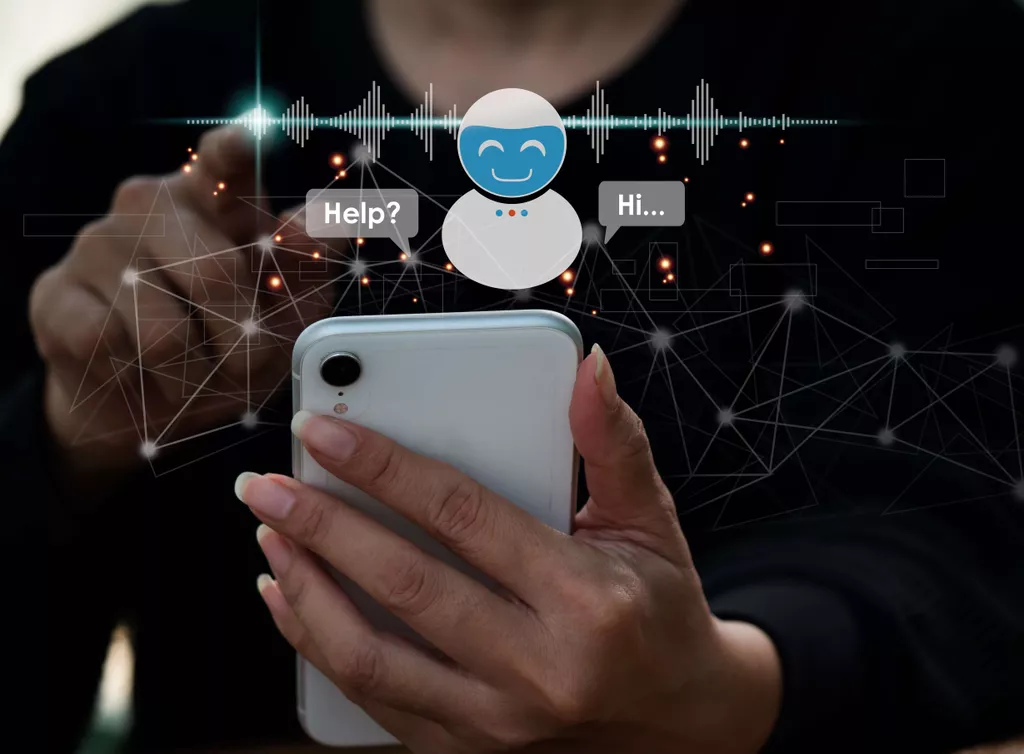
But in recent years, as neural networks, also known as connectionist AI, gained traction, symbolic AI has fallen by the wayside. Each approach—symbolic, connectionist, and behavior-based—has advantages, but has been criticized by the other approaches. Symbolic AI has been criticized as disembodied, liable to the qualification problem, and poor in handling the perceptual problems where deep learning excels.
- I no longer use frames, preferring the use of off the shelf graph databases that we will cover in a later chapter.
- MiniZinc provides a feature called “Annotations”, which allows the user to specify additional information to the solver, as the way to search for solutions, or setting the maximum time for the solver to run.
- While I tried to make this section self-contained and interesting to just read, if you want to experiment with the latest OpenCyc 4.0 OWL/RDF dataset then download this file and follow along on your laptop.
- Please note that in the above RDF listing I took advantage of the free form syntax of N3 and Turtle RDF formats to reformat the data to fit page width.
- Assuming IEML is adopted, Artificial Intelligence systems would become capable not only of accumulating knowledge, but of integrating it into coherent models and exchanging it.
- They support a wide range of programming languages such as Python, Java and JavaScript, making it easy for developers to integrate them into their application.
If there are errors, for example, symbolic AI can provide a clear and transparent process to backtrack in order to identify the source of the ‘blunder’. When it comes to challenges in AI, understanding language remains one of the hardest. While ML can certainly support certain kinds of language-intensive applications, it can’t quite deliver optimal results. In the retail industry, the product database of a fashion brand could represent symbolic AI.
Artificial Narrow Intelligence (ANI)
Recent research suggests that the hippocampus, critical to memory function, is a “transformer, in disguise.” It represents another step forward in AI’s quest to manifest a general intelligence that meets, and eventually fully exceeds, our own. The future would be made by architecting deep networks powered by GPUs and trained on vast quantities of data. Planning is used in a variety of applications, including robotics and automated planning. While a human driver would understand to respond appropriately to a burning traffic light, how do you tell a self-driving car to act accordingly when there is hardly any data on it to be fed into the system. Neuro-symbolic AI can manage not just these corner cases, but other situations as well with fewer data, and high accuracy. So, the main challenge, when we think about GOFAI and neural nets, is how to ground symbols, or relate them to other forms of meaning that would allow computers to map the changing raw sensations of the world to symbols and then reason about them.
What is AI Art and How is it Created? Definition from TechTarget – TechTarget
What is AI Art and How is it Created? Definition from TechTarget.
Posted: Fri, 12 May 2023 19:25:01 GMT [source]
The core idea of RL is that we train a software agent to interact with and change its environment based on its expectations of the utility of current actions improving metrics for success in the future. There is some tension between writing agents that simply reuse past actions that proved to be useful, rather than aggressively exploring new actions in the environment. We won’t cover StyleGAN (created by researchers at NVIDIA) here because it is almost two year old technology as I am writing this chapter but I recommend experimenting with it using the TensorFlow/Keras StyleGAN example.
Machine learning
This is obviously a long-term prospect that will require coordinated efforts. The user does not need to be a computer scientist or be familiar with the IEML language to learn how to use it successfully; the learning curve is short. The IEML editor could be used in schools and therefore paving the way for a democratization of data literacy.
How Symbolic AI Yields Cost Savings, Business Results … – TDWI
How Symbolic AI Yields Cost Savings, Business Results ….
Posted: Thu, 06 Jan 2022 08:00:00 GMT [source]
Symbolic AI and ML can work together and perform their best in a hybrid model that draws on the merits of each. In fact, some AI platforms already have the flexibility to accommodate a hybrid approach that blends more than one method. The ability to cull unstructured language data and turn it into actionable insights benefits nearly every industry, and technologies such as symbolic AI are making it happen. Since the beginning of the 4soft Blog, we created 4 core epic posts on 4 different aspects of Initial Coin Offering process, about 1500 words each. That’s the most popular quartet among our posts.Together those posts make a strong knowledge base for your future ICO project, covering the process, threats, outsourcing and app features.
The Apache Jena Fuseki RDF Datastore and SPARQL Query Server
Deep learning models are more general and powerful but it is important to recognize the types of problems that can be solved using the simpler techniques. This book is intended, dear reader, to show you a wide variety of practical AI techniques and examples, and to be a jumping off point when you discover things that interest you or may be useful in your work. A common theme here is covering AI programming tasks that used to be difficult or impossible but are now much simpler using deep learning, or at least possible. I also cover a wide variety of non-deep learning material including a chapter on Symbolic AI that has historic interest and some current practical value.
What is symbolic give an example?
The lighting of the candles is symbolic. The sharing of the wine has symbolic meaning.
As a result, it experienced several waves of optimism, disappointment, and new approaches and successes throughout its development period. The next step for us is to tackle successively more difficult question-answering tasks, for example those that test complex temporal reasoning and handling of incompleteness and inconsistencies in knowledge bases. There are several flavors of question answering (QA) tasks – text-based QA, context-based QA (in the context of interaction or dialog) or knowledge-based QA (KBQA). We chose to focus on KBQA because such tasks truly demand advanced reasoning such as multi-hop, quantitative, geographic, and temporal reasoning. Our NSQA achieves state-of-the-art accuracy on two prominent KBQA datasets without the need for end-to-end dataset-specific training.
RDF: The Universal Data Format
Subsymbolic AI models (e.g., neural networks) can learn directly from data to reach a particular objective. The models like neural networks do not even require pre-processing input data since they are capable of automatic feature extraction. But the benefits of deep learning and neural networks are not without tradeoffs. Deep learning has several deep challenges and disadvantages in comparison to symbolic AI.

I spent several years in the 1980s using symbolic AI approaches to Natural Language Processing (NLP) like augmented transition networks and conceptual dependency theory with mixed results. For small vocabularies and small domains of discourse these techniques yielded modestly successful results. I started studying deep learning at the same time that TensorFlow was initially released and I use TensorFlow (usually with the easier to use Keras APIs) for at least 90% of my professional deep learning work. Because of my own history I am showing you TensorFlow/Keras examples but if PyTorch or JAX appeal more to you then by all means use the framework that fits your requirements.
What Happens If You Run A Transformer Model With An Optical Neural Network?
The foundations of description logics are pre-
sented in Appendix D, whereas a detailed presentation of semantic networks, frames,
and scripts is included in Chap. We must distinguish various types of training metadialog.com data (text, image, sound, etc.) from which various types of neural networks result. Sensory neural networks that have been trained by examples of data categorized in IEML will input information in the system.
- To that end, we must correctly categorize data – that is, implement word-things semantics – and organize the categories according to relevant relations which allow us to extract all the actionable knowledge from the data – which corresponds to word-word semantics.
- The computation typically involves a dot product of the input with a set of weights and an activation function, which is a non-linear function applied to the result.
- DOLCE is an example of an upper ontology that can be used for any domain while WordNet is a lexical resource that can also be viewed as an ontology.
- Symmetrically, the neural component brings the capabilities of pattern recognition and learning from examples that are lacking in symbolic AI.
- Symbolic AI algorithms are based on the manipulation of symbols and their relationships to each other.
- Symbolic artificial intelligence showed early progress at the dawn of AI and computing.
Please “follow your nose” and see how both of these URIs resolve to human-readable web pages. In the next chapter we will use the entity recognition library we developed in an earlier chapter to create RDF from text input. Semantic Web and linked data technologies are also useful for smaller amounts of data, an example being a Knowledge Graph containing information for a business. As with Soar, our excursion into constraint programming will be brief, hopefully enough to introduce you to a new style of programming though a few examples. I still use constraint programming and hope you might find the material in this section useful. We will use the simplest blocks world example in the Soar Tutorial in our Python interop example.
Knowledge Graph Navigator: Use English to Explore DBPedia
We hope our impressive results on these reasoning problems will encourage broader exploration… Neuro Symbolic Artificial Intelligence, also known as neurosymbolic AI, is an advanced version of artificial intelligence (AI) that improves how a neural network arrives at a decision by adding classical rules-based (symbolic) AI to the process. This hybrid approach requires less training data and makes it possible for humans to track how AI programming made a decision. According to researchers, deep learning is expected to benefit from integrating domain knowledge and common sense reasoning provided by symbolic AI systems.
- While natural language processing has made leaps forward in past decade, several challenges still remain in which methods relying on the combination of symbolic AI and Data Science can contribute.
- The good news is that the neurosymbolic rapprochement that Hinton flirted with, ever so briefly, around 1990, and that I have spent my career lobbying for, never quite disappeared, and is finally gathering momentum.
- It would also support a collaborative public memory that would be particularly useful in the fields of scientific research, education, and health.
- Since the results of these operations cannot be explained or justified conceptually in a way that humans can understand, it is difficult to trust these models.
- Google Colab, short for Colaboratory, is a free cloud-based platform for data science and machine learning developed by Google.
- You create a rule-based program that takes new images as inputs, compares the pixels to the original cat image, and responds by saying whether your cat is in those images.
In the autonomous vehicle sector, symbolic AI may specify through map data where stop signs, traffic lights or obstacles in an area may be. Very simplified demonstration of how a symbolic AI might find seniority levels in a CV. We can’t really ponder LeCun and Browning’s essay at all, though, without first understanding the peculiar way in which it fits into the intellectual history of debates over AI. Luca Scagliarini is chief product officer of expert.ai and is responsible for leading the product management function and overseeing the company’s product strategy. Previously, Luca held the roles of EVP, strategy and business development and CMO at expert.ai and served as CEO and co-founder of semantic advertising spinoff ADmantX. During his career, he held senior marketing and business development positions at Soldo, SiteSmith, Hewlett-Packard, and Think3.
Subsymbolic (Connectionist) Artificial Intelligence
Symbolic AI is reasoning oriented field that relies on classical logic (usually monotonic) and assumes that logic makes machines intelligent. Regarding implementing symbolic AI, one of the oldest, yet still, the most popular, logic programming languages is Prolog comes in handy. Prolog has its roots in first-order logic, a formal logic, and unlike many other programming languages. Symbolic AI involves the explicit embedding of human knowledge and behavior rules into computer programs.

Deep learning and neural networks excel at exactly the tasks that symbolic AI struggles with. They have created a revolution in computer vision applications such as facial recognition and cancer detection. Moreover, Wikidata offers a good example of an open knowledge graph through which the information that is gradually accumulating can be read just as well by machines as it can be by humans. Nevertheless, each of these knowledge graphs is organized according to the – always particular – purposes of its authors and cannot be easily reused to other ends. Neither statistical AI nor symbolic AI possess the properties of fluid recombination that we should rightly expect from the modules of an Artificial Intelligence at the service of collective intelligence. Since the results of these operations cannot be explained or justified conceptually in a way that humans can understand, it is difficult to trust these models.

In this paper, we apply neural pointer networks for conducting reasoning over symbolic knowledge bases. In doing so, we explore the benefits and limitations of encoder-decoder architectures in general and pointer networks in particular for developing accurate, generalizable and robust neuro-symbolic reasoners. Based on our experimental results, pointer networks performs remarkably well across multiple reasoning tasks while outperforming the previously reported state of the art by a significant margin. We observe that the Pointer Networks preserve their performance even when challenged with knowledge graphs of the domain/vocabulary it has never encountered before. To the best of our knowledge, this is the first study on neuro-symbolic reasoning using Pointer Networks.
Neuro-symbolic approaches carry the promise that they will be useful for addressing complex AI problems that cannot be solved by purely symbolic or neural means. We have laid out some of the most important currently investigated research directions, and provided literature pointers suitable as entry points to an in-depth study of the current state of the art. The second reason is tied to the field of AI and is based on the observation that neural and symbolic approaches to AI complement each other with respect to their strengths and weaknesses. For example, deep learning systems are trainable from raw data and are robust against outliers or errors in the base data, while symbolic systems are brittle with respect to outliers and data errors, and are far less trainable. It is therefore natural to ask how neural and symbolic approaches can be combined or even unified in order to overcome the weaknesses of either approach. Traditionally, in neuro-symbolic AI research, emphasis is on either incorporating symbolic abilities in a neural approach, or coupling neural and symbolic components such that they seamlessly interact [2].

The models are, therefore, interoperable, meaning that they can easily merge or exchange categories and sub-models. Each model is still customized to a particular context, but models can now compare, interconnect, and integrate. Let’s now leave the vocabulary of journalism or marketing to investigate academic discipline. Since the 1950s, the designated branch of computer science that is concerned with modeling and simulating human intelligence is called Artificial Intelligence. The scope of artificial intelligence extends from our daily lives with recommendation services, smart social media feeds, and built routes in maps, to futuristic concepts, humanoid robots, and discussions about its dangers.
What is symbolic learning and example?
Symbolic learning theory is a theory that explains how images play an important part on receiving and processing information. It suggests that visual cues develop and enhance the learner's way on interpreting information by making a mental blueprint on how and what must be done to finish a certain task.
Is decision tree symbolic AI?
In the case of a self-driving car, this interplay could look like this: The Neural Network detects a stop sign (with Machine Learning based image analysis), the decision tree (Symbolic AI) decides to stop.

